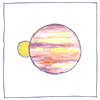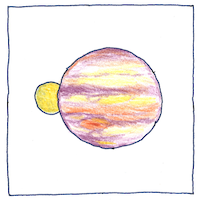Ole Rømer
electromagnetism

|
Speed of light
Galileo had suggested using eclipses of the moons of Jupiter, as a celestial clock to determine longitude. Ole Rømer noted the times between eclipses of Io varied by the time of year, increasing as our distance to Jupiter increased and decreasing as our distance decreased. Realizing this meant that the speed of light is finite, Rømer calculated it using accumulated difference between actual and predicted eclipse times.
Historical speeds
Rømer’s result in 1676 was 26.6% slower than the true speed of light. James Bradley’s result in 1729 was 0.4% faster. Hippolyte Fizeau’s result in 1849 was 5.07% faster. Léon Foucault’s result in 1862 was 0.6% slower. Rosa and Dorsey’s result in 1907 was less than 0.03% slower.
In a vacuum
It’s somewhat crude today to say outer space is a perfect vacuum. It’s a sea of all kinds of things. And the speed of light in an atmosphere depends on altitude, temperature, and whether the light’s continuous or pulsed. Do absolutes exist in real life? We can never judge nor be judged in a vacuum. Take it with a grain of salt.



The speed of light, c, is exactly 299,792,458 meters per second, about 186,282 miles per second. Only luxons—photons, gluons, and, theoretically, gravitons—can travel at this speed. Anything with “rest mass,” according to the special theory of relativity, gains “relativistic mass” as its speed approaches the speed of light, which it can not reach.
The numeric value of c in meters per second is fixed by the definitions of meter and second.
See also in The book of science:
Readings in wikipedia: